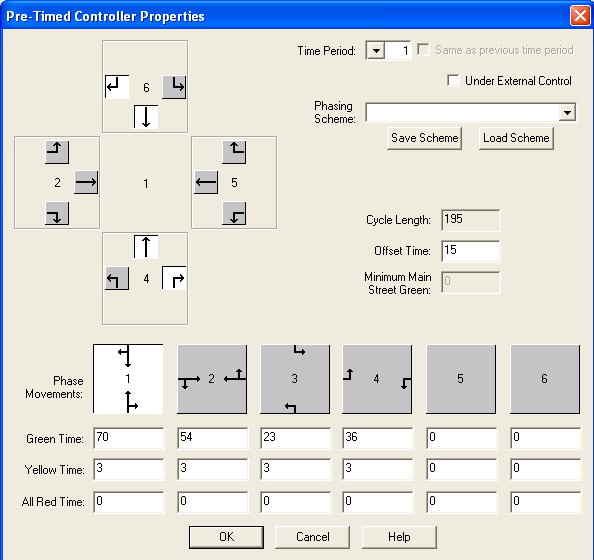
Traffic signals with different green sub-phases for through and left turning vehicles are inefficient because the set-up prevents some of the lanes from discharging during part of the green time. This problem can be mitigated with a mid-block pre-signal. If city blocks are long, as occurs in China for example, a pre-signal installed well upstream of an intersection can be programmed to alternatively release left turning and through moving cars. These cars can then be directed to two distinct but overlapping sets of lanes, so that one or more lanes are shared by left and through vehicles. In these shared lanes, the pre-signal organizes vehicles by type in tandem batches. If this is done right, when the intersection signal is green for through vehicles, the through-vehicle batch goes; and when it turns green for the left turners, the left-turning vehicles go. The shared lanes are then fully engaged during the complete green time.
The micro-simulation in the pane below demonstrates this idea for an intersection in Chengdu, China, where the concept is being considered. The approach shown in the simulation has three lanes, heavy left turns (green vehicles) and insufficient capacity to serve the demand during the rush hour. Two situations are shown: the conventional design (top) and the pre-signal system (bottom). Both use the same signal phases at the intersection and the same demand. The only difference is that the system on the bottom uses a pre-signal (a few vehicle lengths upstream of the left turn pocket) and one tandem lane (the middle lane).
Note how the system on the top eventually gets filled with a queue that spills over to the next intersection, while the one on the bottom does not. The improvement occurs because the system on the bottom always has at least two lanes fully engaged in discharging vehicles, whereas the one on top does not.
The phase durations of the intersection signal are shown below. Note the somewhat unconventional phase sequence. As explained in the references, this allows us to reduce the distance between the pre-signal and the signal. A more conventional sequence can also be used. In this case the pre-signal should be moved upstream a little. The capacity of the conventional design is not affected by the sequence.

Other related parameters for the simulation:
This material is based upon work jointly supported by the National Science Foundation (Grant No. 0856193) and the Volvo Center for Future Urban Transport at UC Berkeley. Any opinions, findings and conclusions or recomendations expressed in this material are those of the author(s) and do not necessarily reflect the views of the sponsors.